When I picture traveling through Baden-Württemberg, I can’t help but notice how each season has its own vibe. The best time to visit? Well, that depends—spring explodes with color on Mainau, summer is all about lakes and lively towns, and autumn brings wine festivals you’ll never forget.
I’ve wandered through gardens in bloom, spent lazy hours by the water, and enjoyed crisp evenings with local wine as the leaves turned gold.
Spring brings mild weather and beautiful blossoms, especially on Mainau Island.
In summer, the air warms up just enough for relaxing at Lake Constance or hiking in the Black Forest.
When fall rolls around, vineyards come alive during the grape harvest. Wine festivals burst with energy and showcase the region’s culture.
The best time to visit really comes down to what you want from your trip.
I’ve made memories here in every season, so let’s figure out which one fits your travel style.
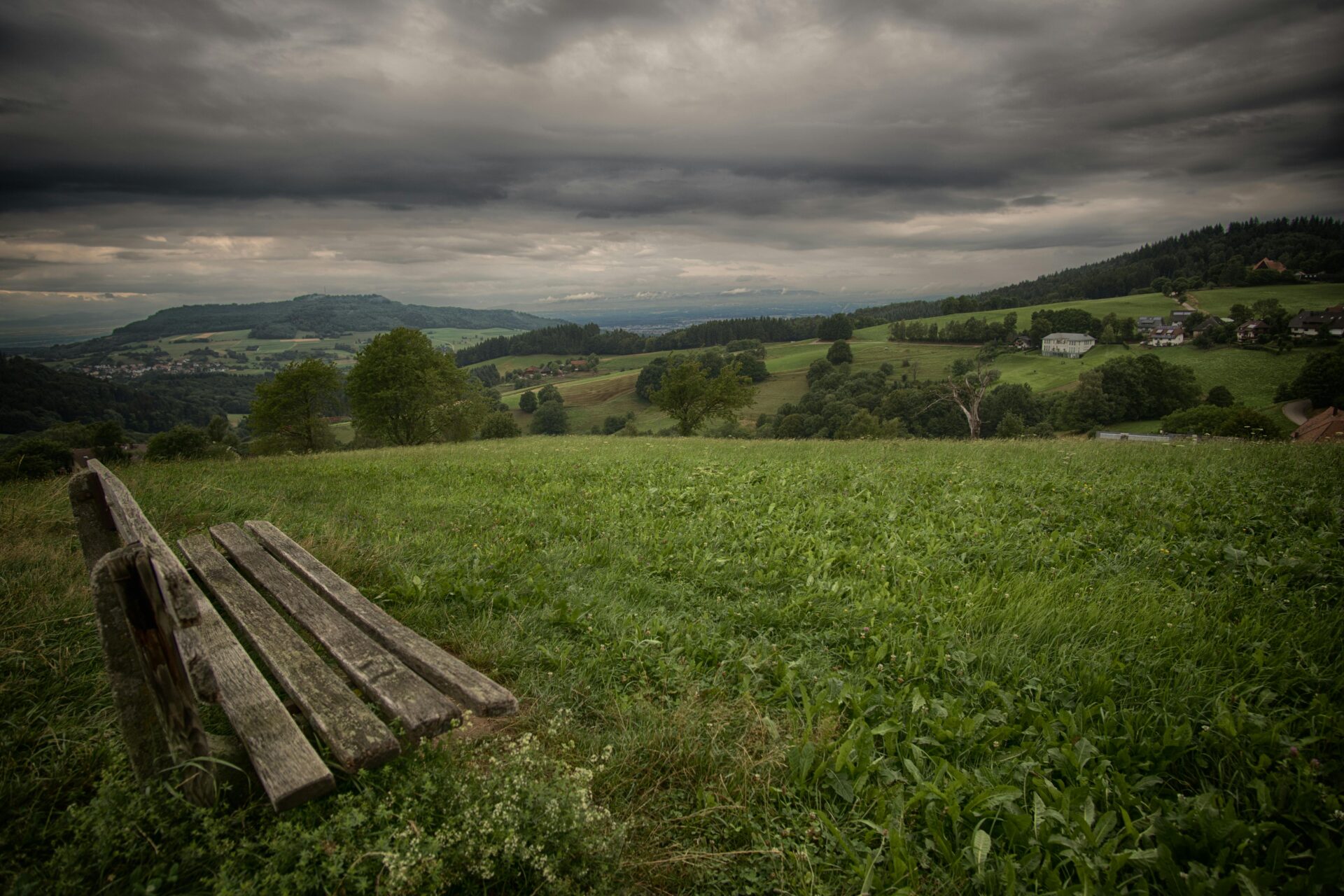
Understanding Baden-Württemberg’s Seasons and Climate
Traveling through Baden-Württemberg means you’ll experience a real range of seasons. Each one brings a different mood.
From crisp spring mornings by Lake Constance to golden vineyards in autumn, the weather here does more than fill the background—it shapes the experience.
Typical Weather Patterns
The climate in Baden-Württemberg hooked me right away. Locals call it a “marine west coast, warm summer” climate (Cfb in Köppen speak).
Winters can feel intense, but summers are warm without being overbearing.
That mix keeps life and festivals moving in a nice rhythm.
Rain falls pretty evenly across the year, so even spring walks feel fresh.
In Aalen, for example, I noticed rain even during the driest months. Everywhere I went, green hills and lush gardens stood out.
Weather can flip fast, so I always pack for both sun and showers—especially in spring and autumn.
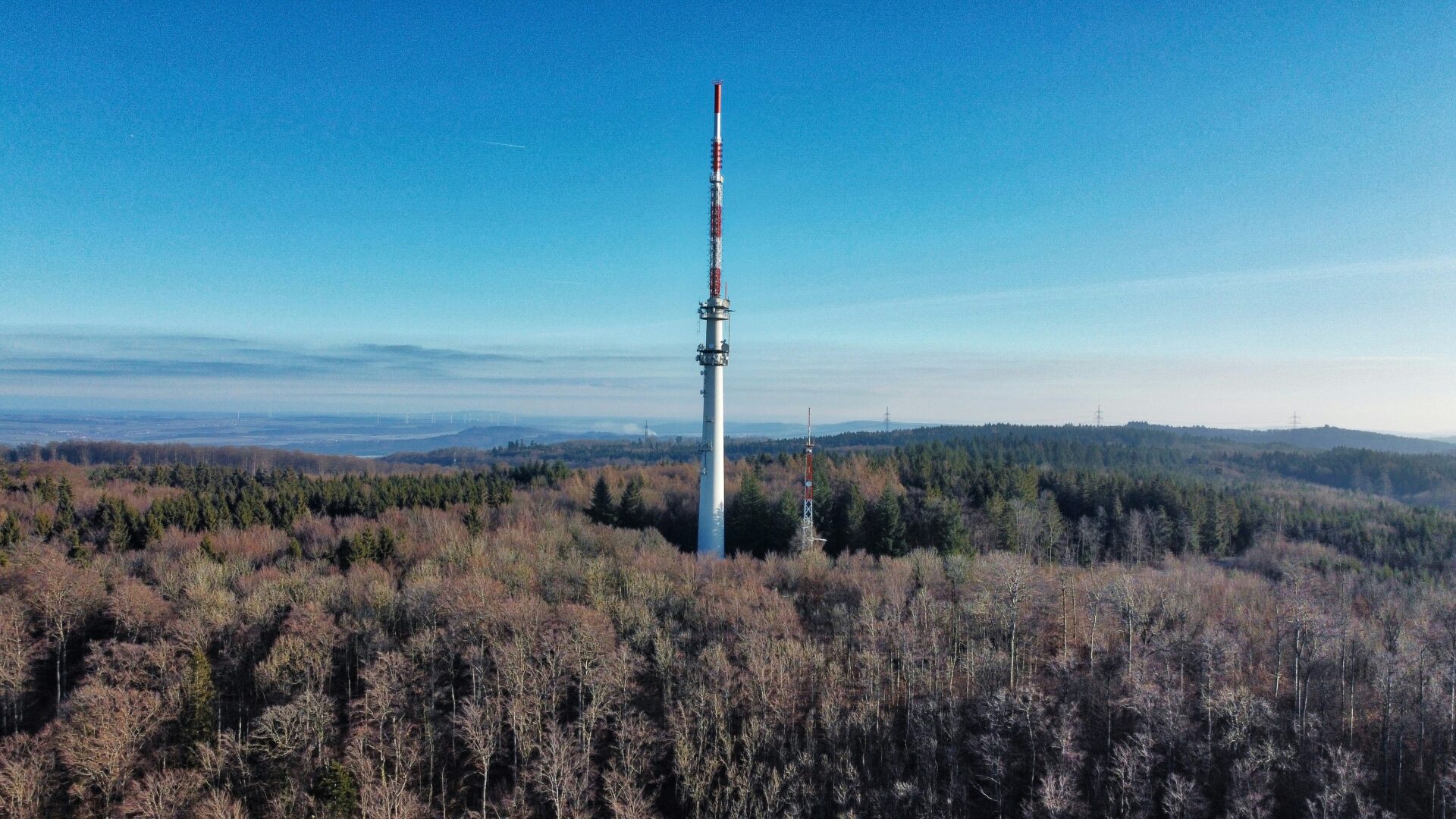
Temperature, Rainfall, Humidity, and Sunshine
The average yearly temperature in Baden-Württemberg sits at about 10.8°C (51.4°F).
It’s not the warmest spot in Germany, but being in the south helps.
In towns like Aalen, the average is closer to 8.6°C (47.5°F), but the Rhine plain can feel much warmer.
Here’s a quick summary:
| Season | Avg. Temp °C | Monthly Rainfall (mm) | Sunshine hours/day |
|---|---|---|---|
| Spring | 10-17 | 50-80 | 5-7 |
| Summer | 18-27 | 60-90 | 7-9 |
| Autumn | 10-19 | 45-70 | 3-6 |
| Winter | 1-7 | 40-60 | 2-4 |
Humidity stays pretty moderate all year.
Even in July, I didn’t find it sticky. Instead, there’s a clean, fresh feel—especially after a summer thunderstorm.

When to Expect the Warmest and Coldest Months
If you’re after sunny days by the lakes, aim for late June through August.
July usually brings the warmest weather—sometimes close to 27°C (80°F).
Those are the days I love for picnics and swimming at Lake Constance.
January and February are the coldest months.
Highs average around 1-6°C (34-43°F), and frosty mornings are common.
Snow can fall, especially away from the Rhine valley and up in the Black Forest.
Late autumn cools off fast, so I always pack layers from October on.
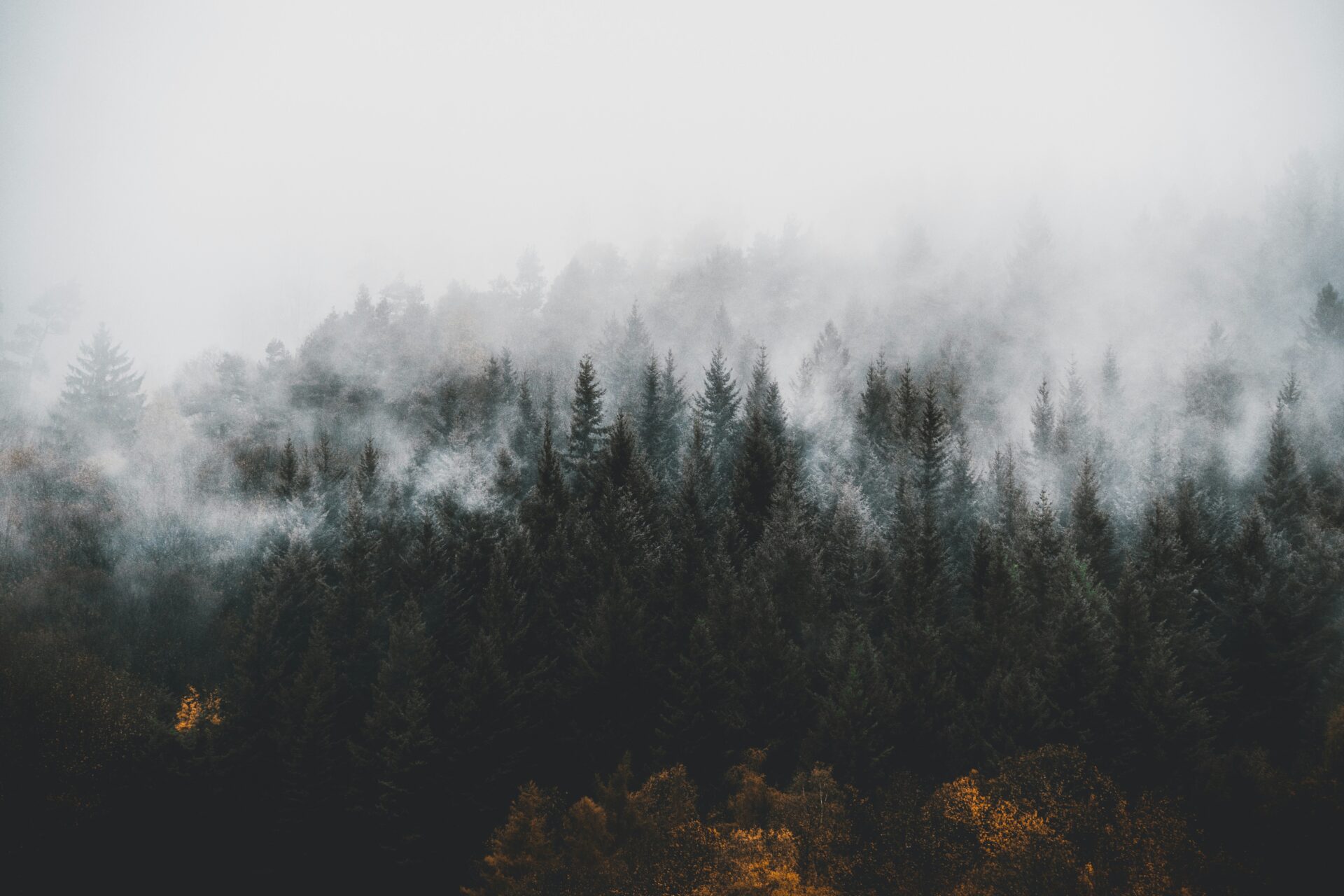
How Seasons Shape Your Experience
Spring, for me, means walking under blossoming orchards, especially on Mainau Island where color and fragrance seem to fill the air.
The climate stays moist but bright, so gardens really pop.
I find fewer crowds and cheaper rooms, and the whole region just feels fresh.
Summer brings lake life, bustling markets, and long, sunny evenings.
Sidewalk cafés get busy. Thunderstorms can roll in, but they usually pass quickly.
Autumn is all about golden vineyards near Stuttgart and Heidelberg.
Harvest season fills wine villages with local celebrations.
Crisp mornings remind me to grab a light jacket.
Winter slows everything down, with Christmas markets and snowy hills.
It’s a great time for hiking in the Black Forest or exploring cozy towns like Ulm.
The weather can be gray, but that’s just an excuse for another hot chocolate.
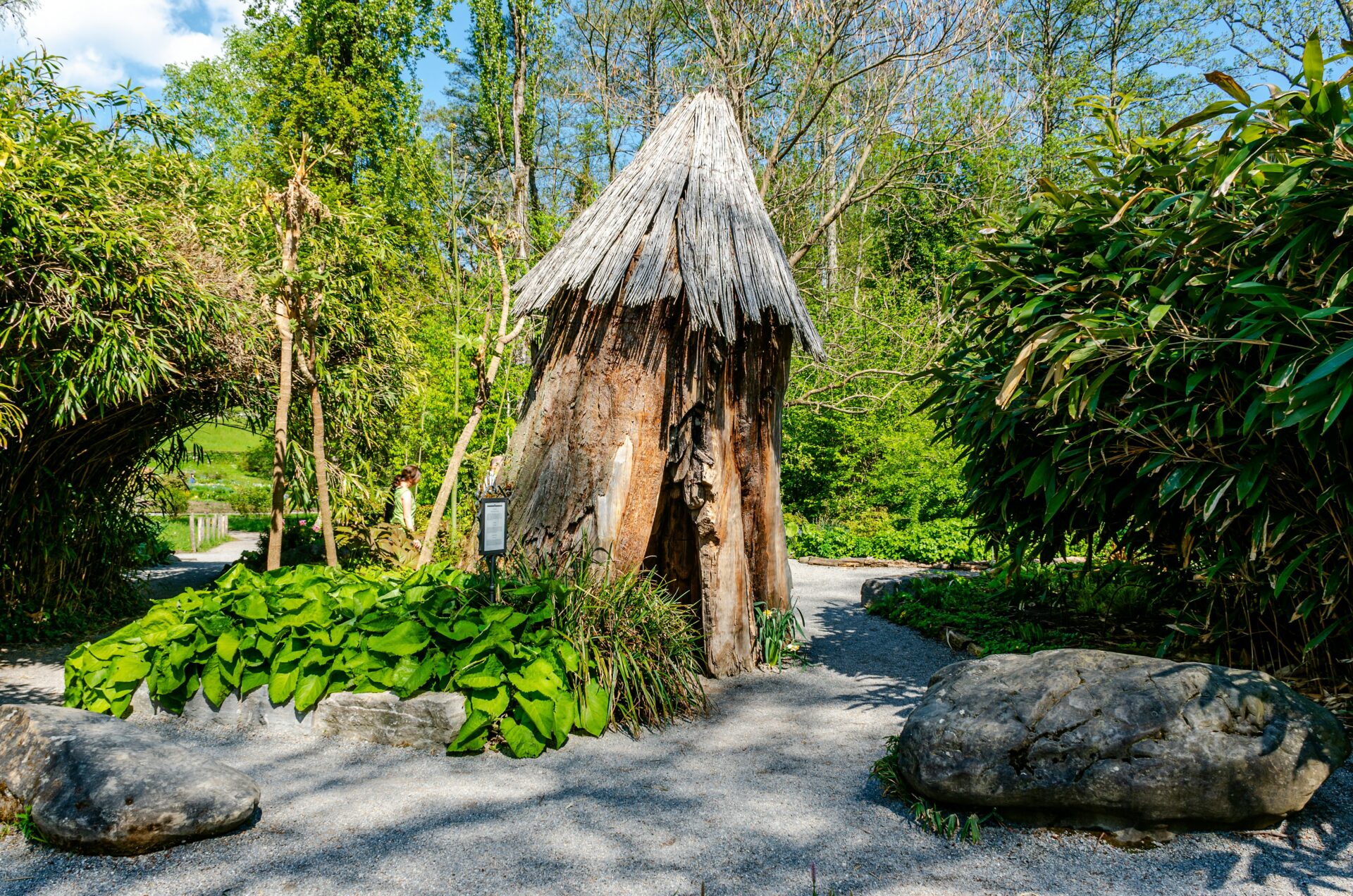
Spring in Bloom: Discover Mainau Island’s Floral Wonders
Each spring, Mainau Island turns into a patchwork of vibrant flowers on Lake Constance.
If you love colorful landscapes, peaceful walks, and gorgeous scenery, this place is a must.
Seasonal Blooms and Dahlias
When I arrive on Mainau in spring, beds of tulips, hyacinths, and daffodils greet me right away.
From March to May, more than 100,000 tulips paint the gardens in waves of color.
By late spring and early summer, rhododendrons and azaleas take over. Giant bushes explode in pink, purple, and white.
Roses fill the air with their scent in June. Thousands of rose bushes line the paths near the Bodensee.
But honestly, my favorite is the dahlia garden in September and October.
Over 250 varieties bloom in every color you can imagine. If you’re into photography or just love flowers, this part of Mainau is pure joy.
Bloom Highlights Table
| Flower | Bloom Time | Special Feature |
|---|---|---|
| Tulips | March – May | Over 100,000 bulbs |
| Rhododendrons | May – June | 200+ varieties |
| Roses | June | 1,200+ varieties |
| Dahlias | September – October | 250+ varieties |
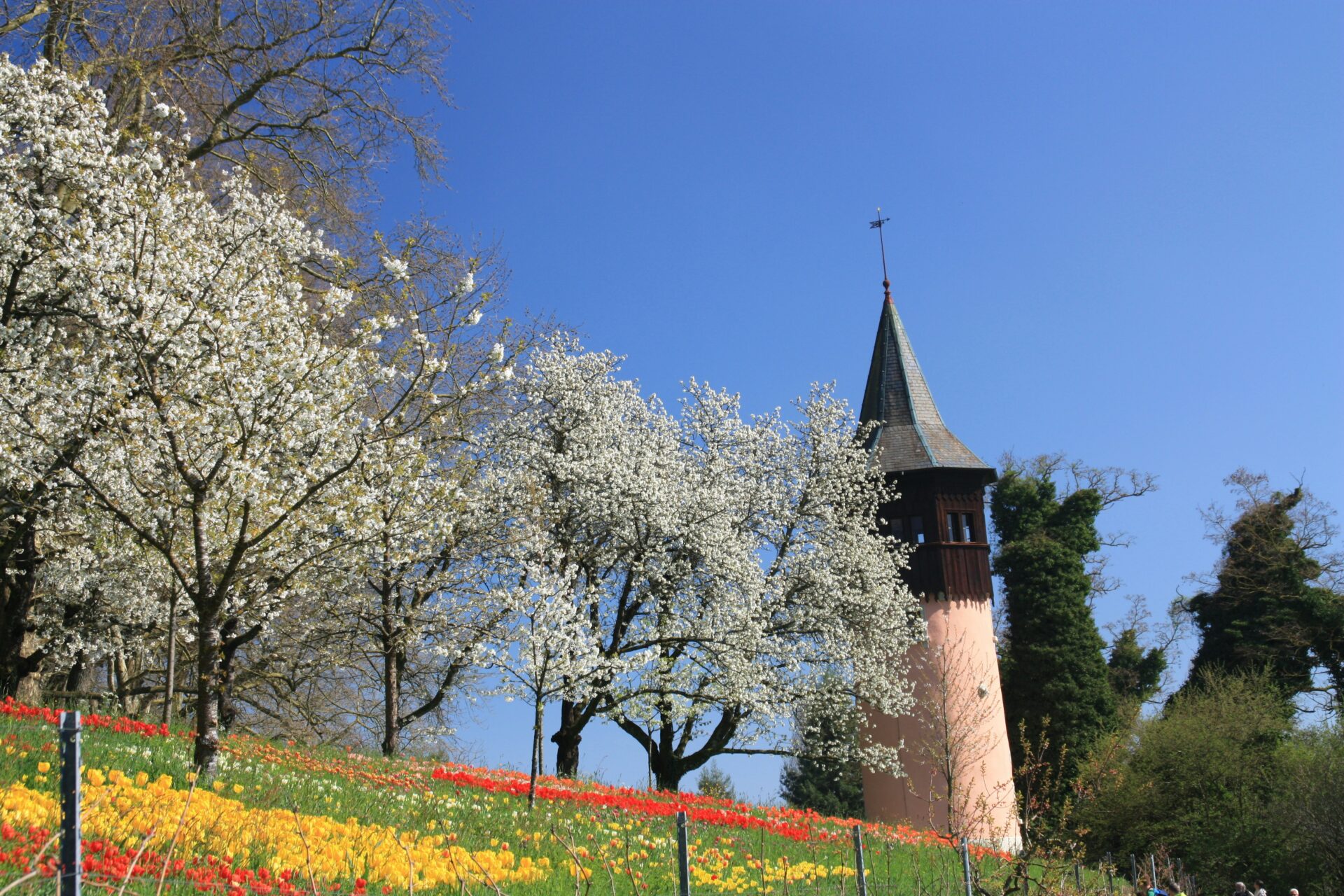
Exploring the Butterfly House
I never skip the Butterfly House on Mainau.
It’s one of the largest in Germany, and the moment I step inside, warm, humid air and a swirl of butterflies surround me.
Usually, you’ll see more than 700 butterflies fluttering around.
Blue morphos and swallowtails drift past waterfalls and tropical blooms.
The paths wind through a mini-jungle with orchids, bananas, and ferns.
A tip: wear light clothes because it gets warm inside.
Weekends can get crowded, so I try to arrive early.
The Butterfly House is a favorite for families, but honestly, it’s one of the most peaceful parts of the island for me.
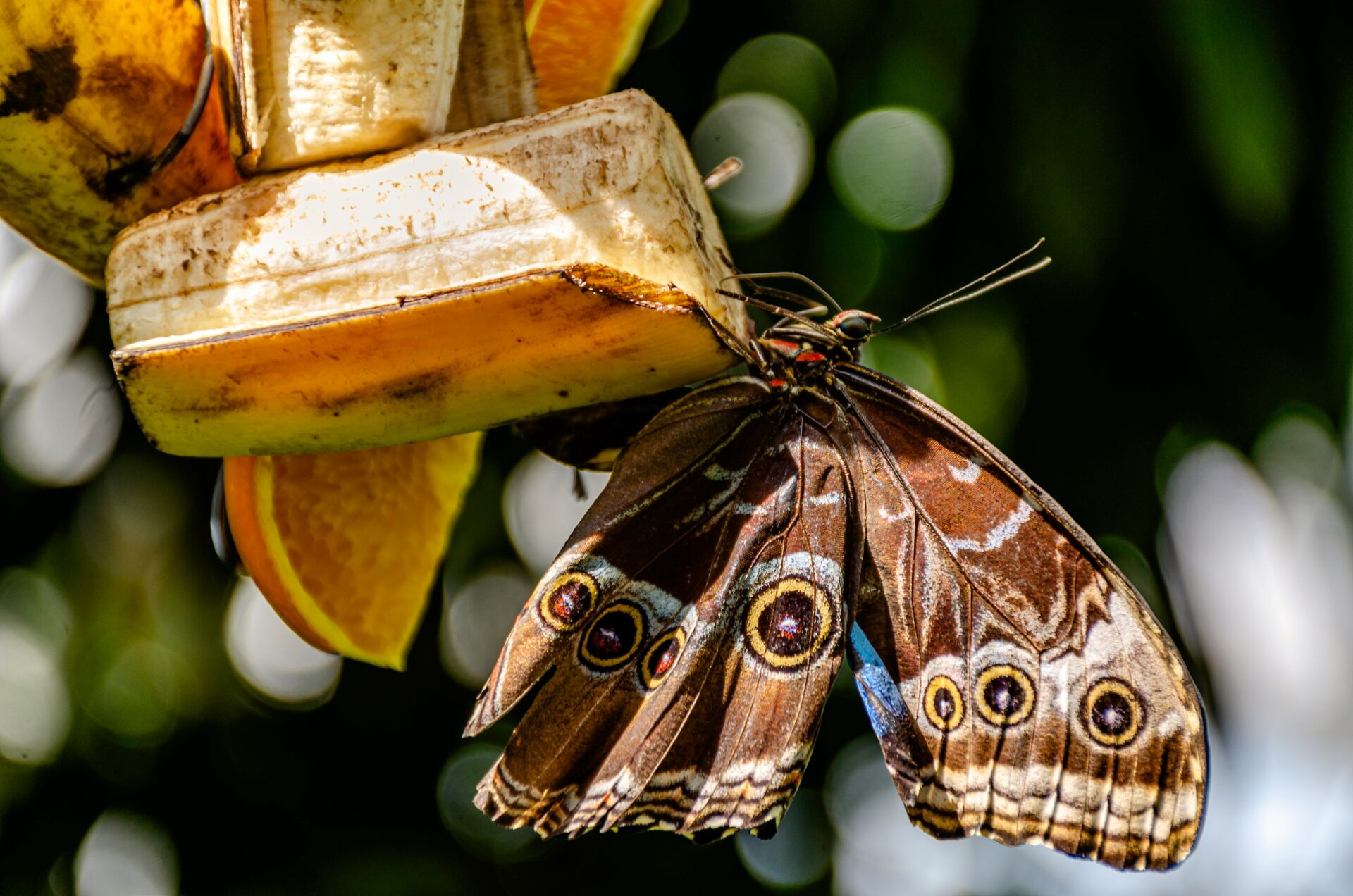
Highlights at the Summer Palace
The Summer Palace sits right in the heart of Mainau’s gardens.
Every time I visit, I stop to admire the baroque architecture and its salmon-pink walls.
Built in the 18th century, it’s surrounded by giant sequoias planted over 150 years ago.
The palace isn’t just for show.
Inside, you’ll often find exhibitions about the island’s history, art shows, or spring events.
Walking the palace terrace gives me a perfect view of Lake Constance sparkling behind the flower beds.
Sometimes, local musicians play concerts here in spring and summer.
I always recommend grabbing a coffee at the nearby café and soaking in the view.
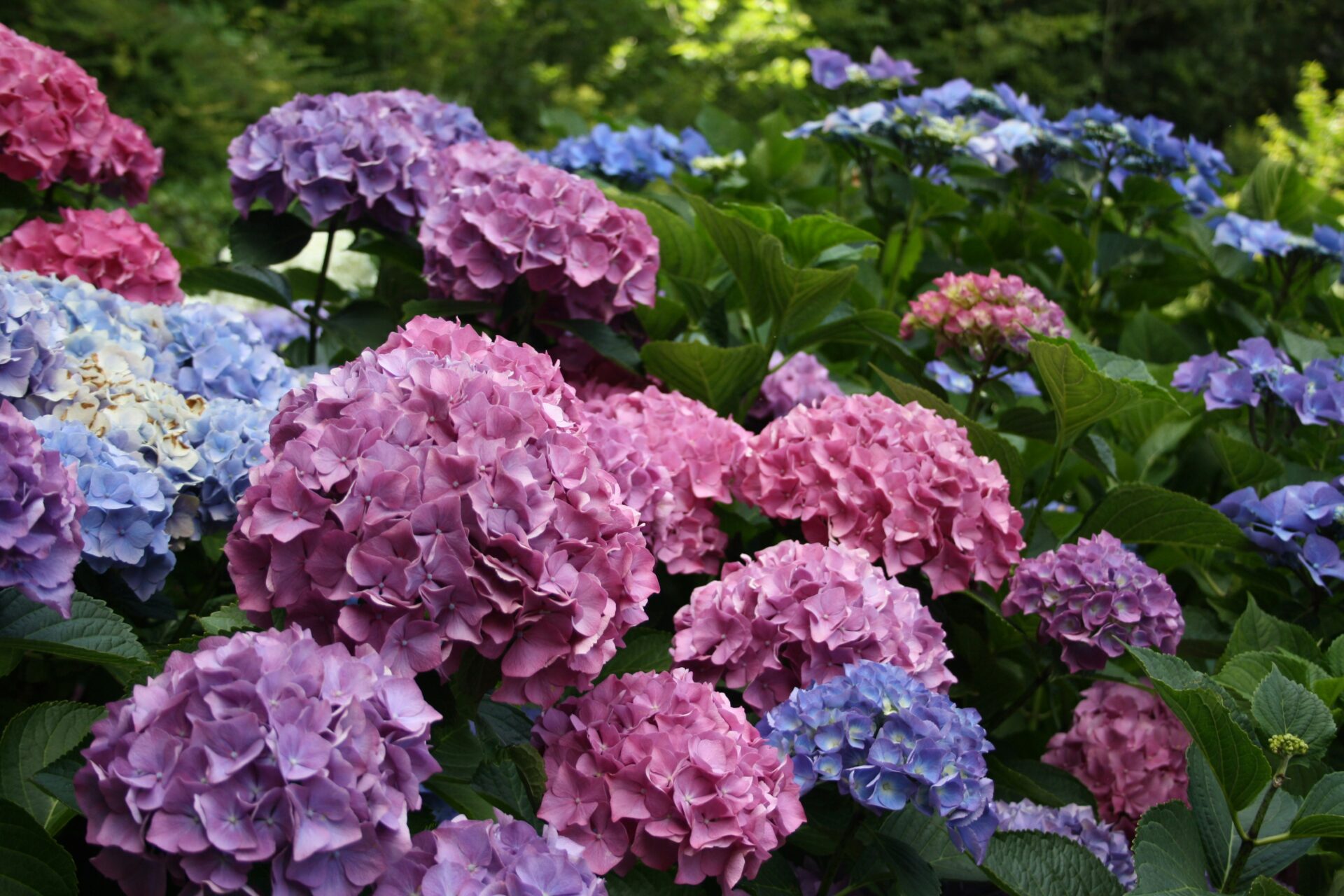
Why Mainau Is the Flower Paradise of Lake Constance
Mainau Island truly earns its title as the “Flower Island.”
Nowhere else in the region have I seen such carefully tended floral displays, from the huge arboretum to rolling lawns and themed gardens.
The whole island feels built for relaxation.
I find quiet walking paths, benches with lake views, and peaceful promenades.
Even with a lot of visitors, you can always find a calm spot.
Compared to the busy town of Konstanz, Mainau feels like a retreat.
The mix of flower beds, rare trees, lake views, and gentle hills makes it a real paradise for flower lovers.
Spring is when everything shines brightest.
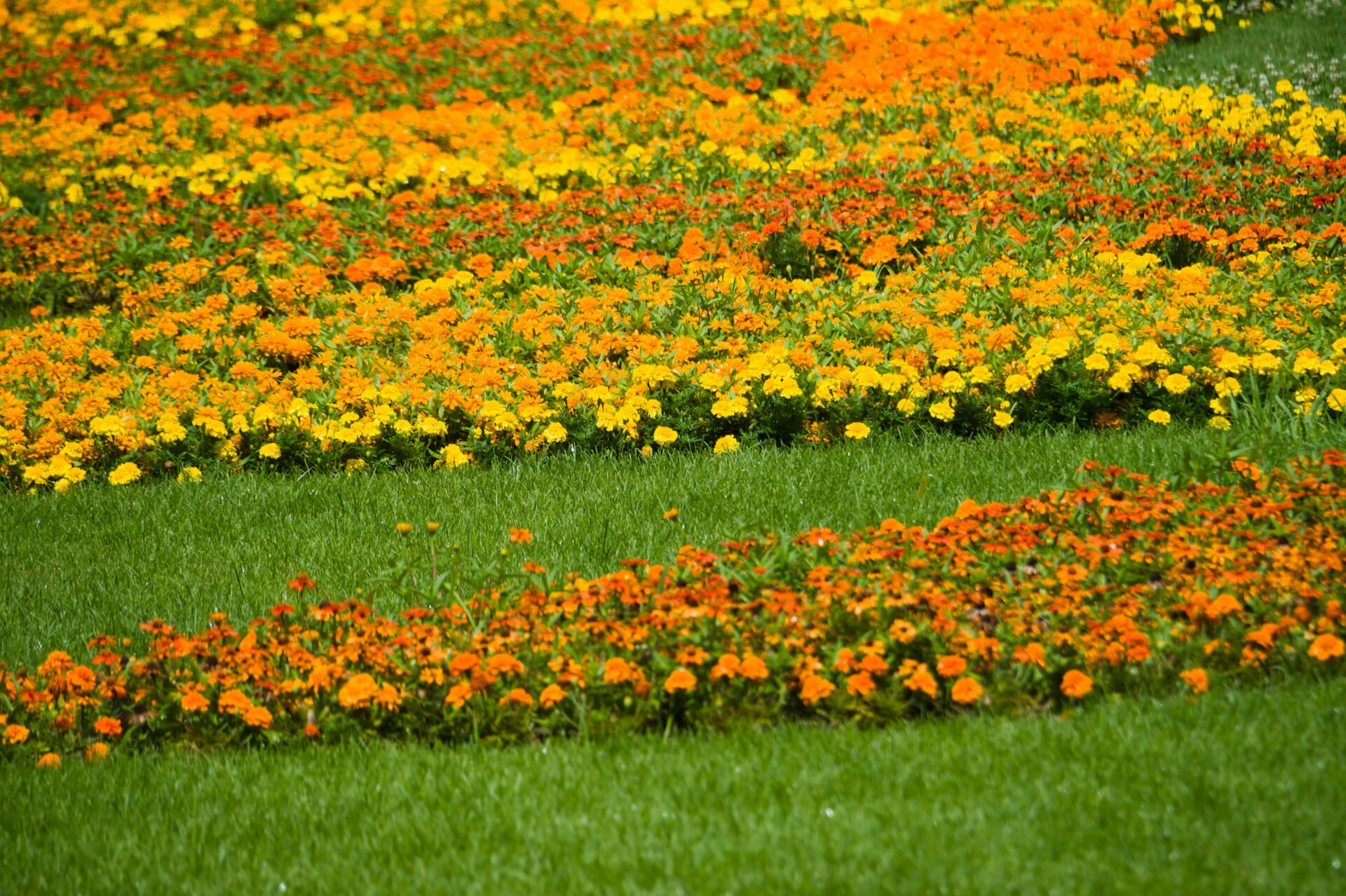
Summer Adventures: Lake Retreats and Outdoor Activities
When summer hits Baden-Württemberg, I swear every village, lake, and hill comes alive.
Warm days and long evenings open up so many ways to enjoy sparkling lakes, scenic hiking and cycling trails, forest parks, and even lively night markets.
Lakeside Escapes: Bodensee, Titisee, and More
Lake Constance (Bodensee) always pulls me in during summer.
There’s just something about the fresh air, medieval towns like Meersburg, and ferries gliding over the blue water.
I like to start the morning with a bike ride along the lakeside, stopping at a local bakery for breakfast.
For a smaller, cozier vibe, Titisee in the Black Forest is perfect.
Families paddle across the calm lake, and you can rent a rowboat or just enjoy ice cream by the shore.
Lakes like Schluchsee offer sailing, swimming, and paddleboarding, all surrounded by rolling hills.
Here’s a quick comparison table:
| Lake | Best For | Nearby Towns |
|---|---|---|
| Bodensee | Cycling, sailing | Konstanz, Meersburg, Friedrichshafen |
| Titisee | Boating, relaxing | Titisee-Neustadt |
| Schluchsee | Swimming, nature | Schluchsee, Häusern |
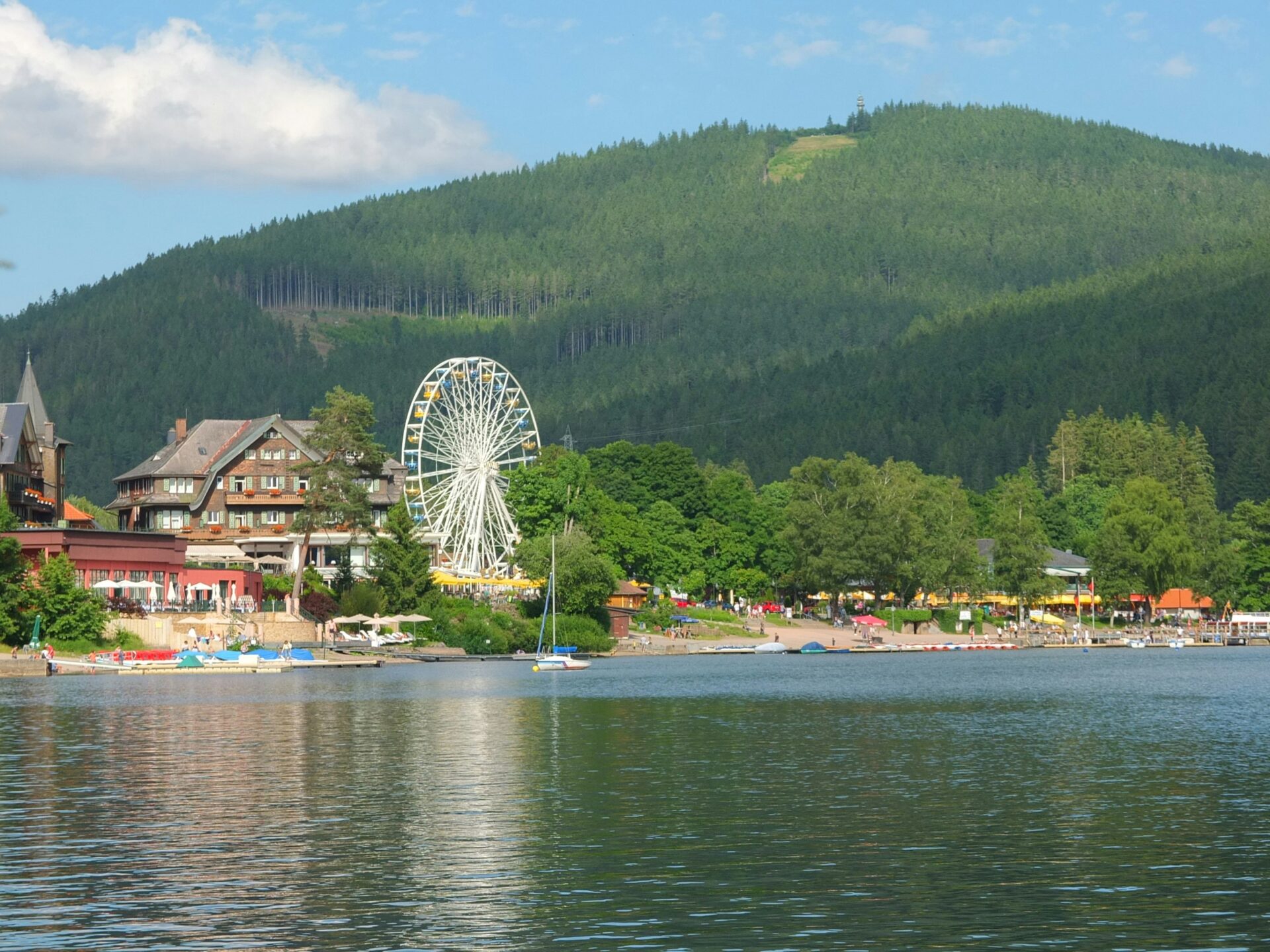
Hiking and Cycling Routes Across Baden-Württemberg
Every summer, I feel pulled to the trails and bike routes across Baden-Württemberg.
The Swabian Alb offers limestone cliffs, wildflower meadows, and big views.
I’ve hiked there and found castle ruins with barely anyone around.
The Black Forest (Schwarzwald) is fantastic for hiking and cycling.
Marked trails wind through pine forests and past old farmhouses.
E-bikes make even the steep climbs easy, so almost anyone can enjoy the scenery.
For families, there are trails with play areas and picnic spots.
Top Cycling & Hiking Regions:
- Swabian Alb: Loop trails, hidden caves, castle paths
- Black Forest: Long-distance cycling, well-marked hiking
- Lake Constance: Flat lakefront cycleways with beaches
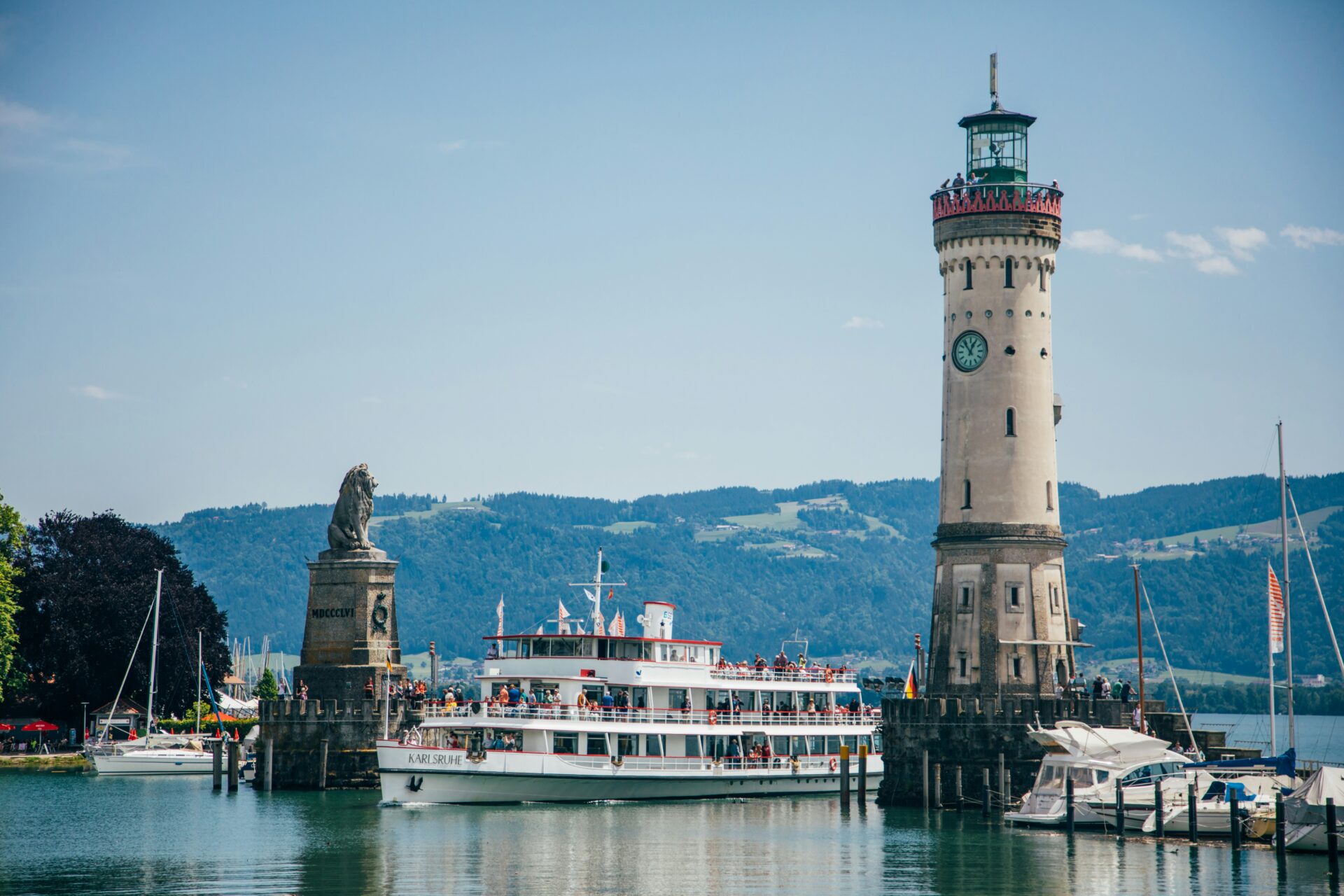
Waterfalls, Nature Parks, and Outdoor Exploration
Exploring Baden-Württemberg’s nature parks always gives me a little thrill.
Triberg Waterfalls, the tallest in Germany, crash down with real power—especially after spring rains.
Wooden walkways get you close to the spray, and honestly, the photos never really capture just how big it feels.
The region has several huge nature parks, like the Southern Black Forest and Swabian-Franconian Forest.
Each one is packed with walking paths, lookout points, and forest playgrounds for kids.
If I want some quiet, I pack a picnic and hike to a spot overlooking old villages.
Public transit and bike rentals are easy to find near most parks, so you don’t need a car to explore.
Must-See Nature Spots:
- Triberg Waterfalls
- Wutach Gorge
- Southern Black Forest Nature Park
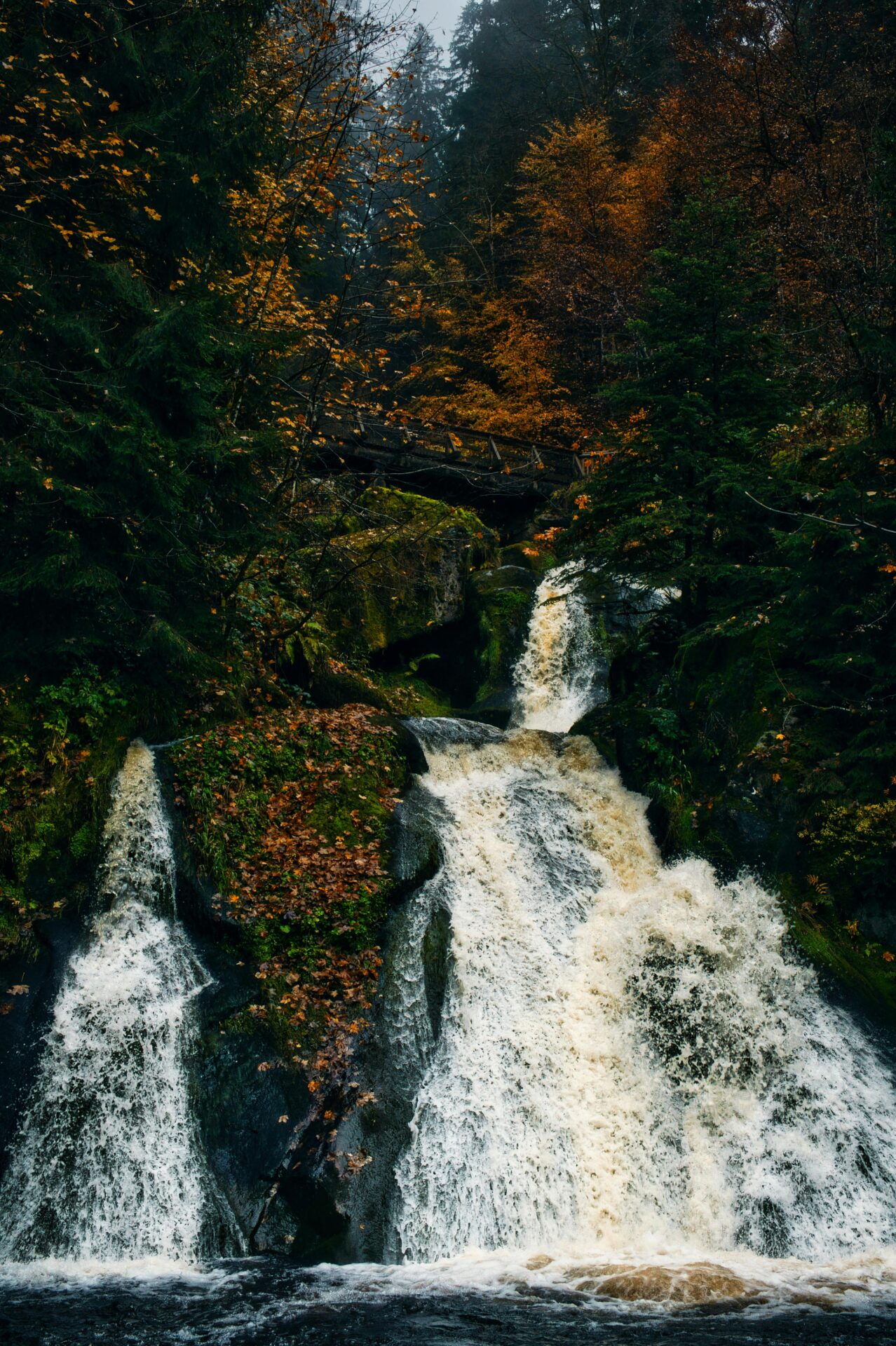
Cultural Sights, Nightlife, and Local Events
No summer feels complete without a bit of culture and some after-dark adventures. In Freiburg, I always carve out time for an evening wander through the old town, where live music drifts out of little clubs and cafés.
Festivals seem to appear everywhere during summer. I’ve joined everything from local theater in park gardens to quirky open-air concerts.
Lakes around here host summer night markets and open-air cinema nights. Along the Bodensee shore, you can stumble upon pop-up wine bars or catch jazz under the stars.
Museums often stay open late. Castles like Hohenzollern or Sigmaringen host historical night tours—a beautiful way to mix sightseeing with local stories.
If you want to meet locals, try a wine tasting in a small village or head to a town festival in the Swabian Alb. The vibe feels relaxed, friendly, and honestly, always buzzing.
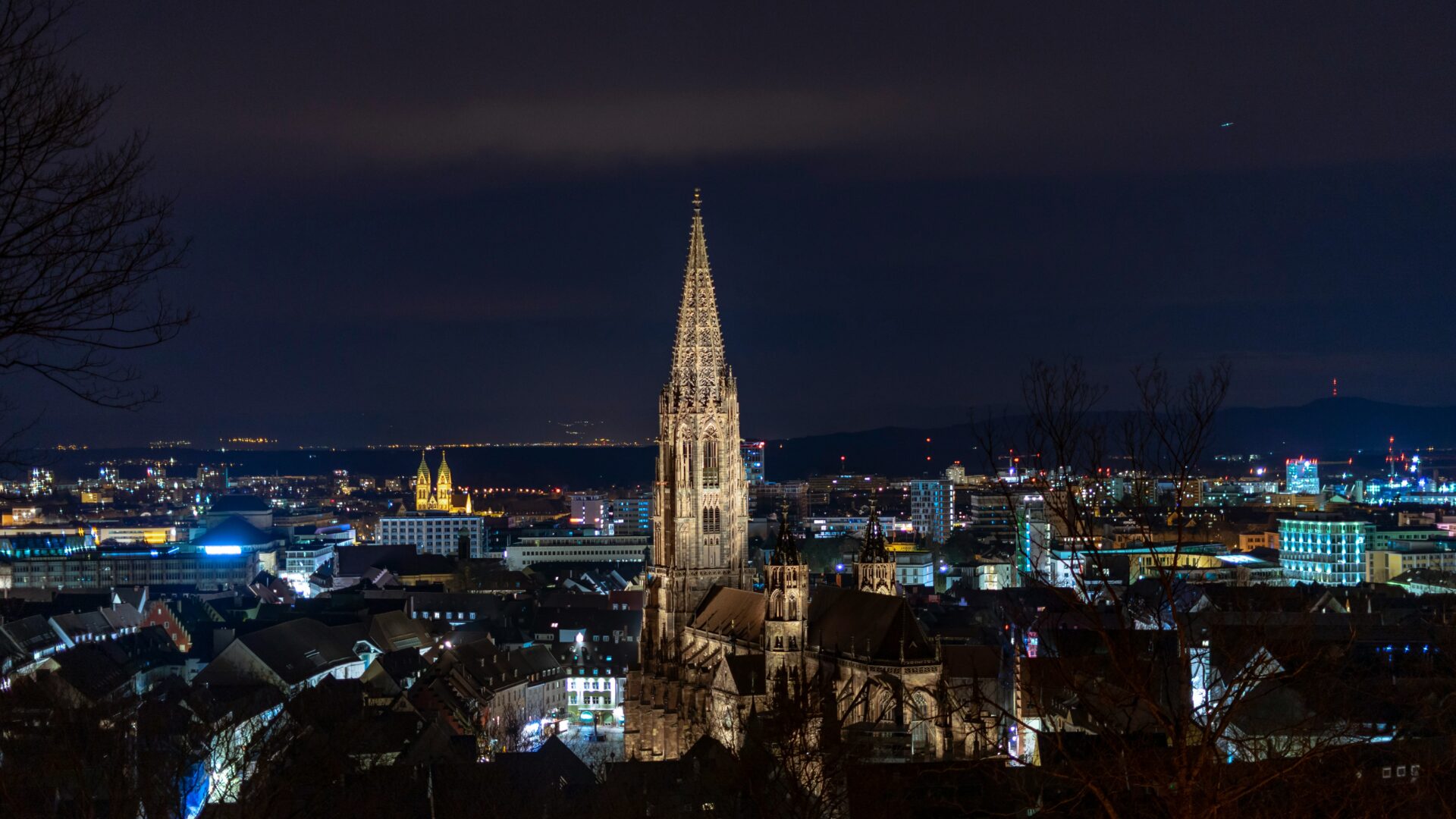
Autumn’s Bounty: Wine Festivals and Culinary Delights
When autumn rolls into Baden-Württemberg, crisp air sweeps through, vineyards fill with ripe grapes, and villages burst with festivals. Every region brings its own flavor—velvety reds, hearty dishes, and plenty of local flair.
Famed Wine Regions and Local Varietals
Baden-Württemberg boasts a patchwork of wine landscapes, each with its own character. One golden afternoon, I rode my bike through the Kaiserstuhl near Freiburg. Sunlit hills there produce Spätburgunder (Pinot Noir) and Grauburgunder (Pinot Gris) with a light, fruity kick.
Tasting Trollinger in Württemberg’s vineyards near Stuttgart was a highlight. Locals take pride in this bright red wine, and it pairs so well with rustic autumn food.
Heidelberg’s steep vineyards introduced me to crisp Rieslings. Here’s a quick look at some standout varietals:
| Region | Famous Varietals |
|---|---|
| Kaiserstuhl | Spätburgunder, Grauburgunder |
| Württemberg | Trollinger, Lemberger |
| Baden-Baden | Riesling, Weissburgunder |
| Stuttgart | Trollinger, Schwarzriesling |
Sipping wine just steps from the vines made me appreciate how much the landscape shapes the taste.

Autumn Harvest Celebrations
In September and October, towns along the Baden Wine Route turn into lively festival spots. I still remember the Durlacher Weinfest in Karlsruhe—open-air stalls, live bands, laughter everywhere.
Heidelberg Wine Village draws local vintners who pour fresh Federweißer (new wine) and serve sweet onion tart. Ulm’s wine weeks and Baden-Baden’s elegant wine gala inside the historic Kurhaus stand out as well.
Most festivals have grape-stomping for kids, lantern parades, and local crafts. Stuttgart’s festival wowed me: open-air tastings and busy wine tents right downtown.
Festival weekends can get packed, especially during peak grape harvest, so plan ahead.
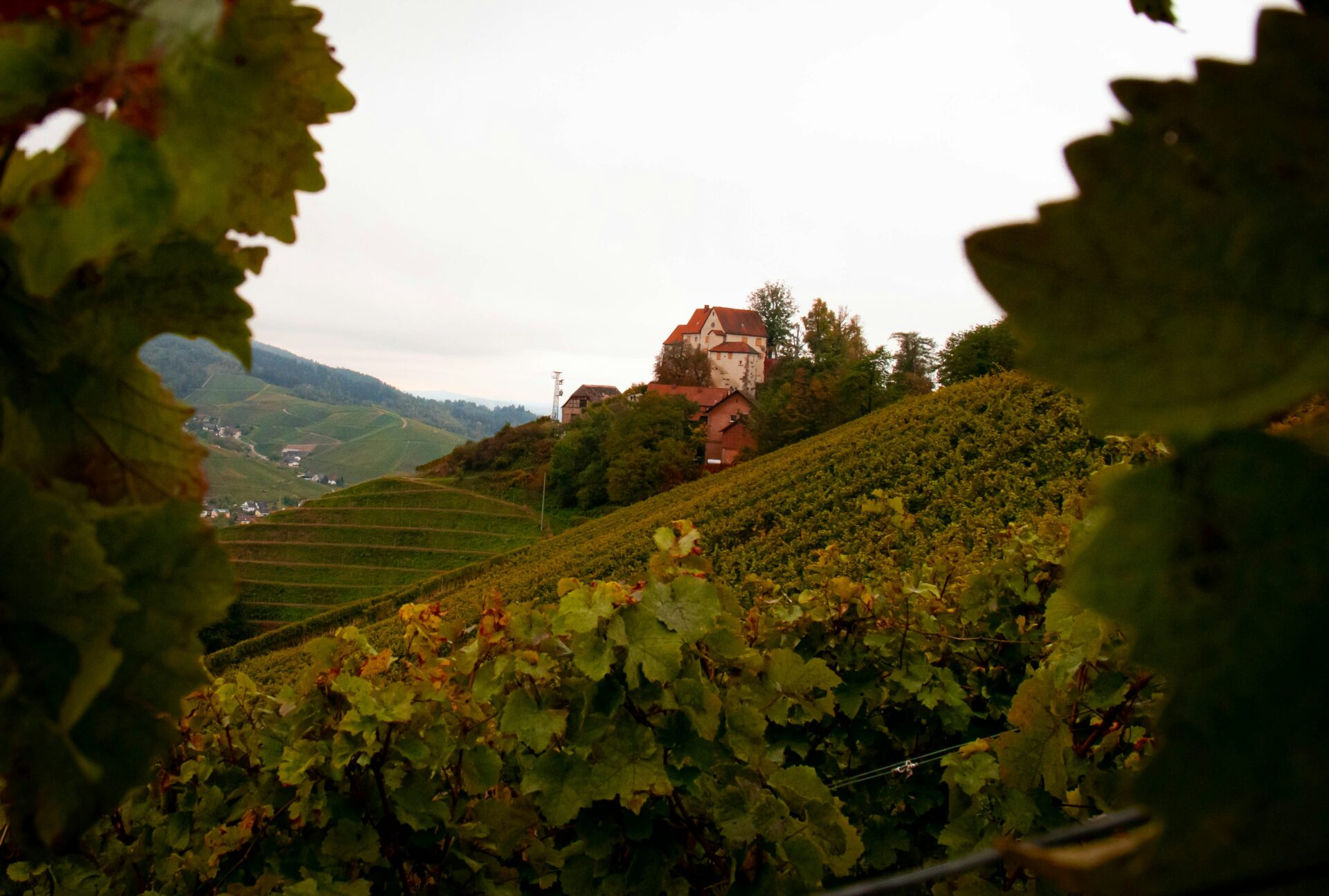
Traditional Food Experiences
Autumn here means more than wine. Markets overflow with pumpkins, mushrooms, and apples. I can never resist a slice of Zwiebelkuchen (onion tart), especially with a glass of fizzy Federweißer.
Classic dishes like Maultaschen (Swabian dumplings) and roasted chestnuts really hit the spot this time of year. In small villages around Stuttgart and Baden-Baden, I’ve shared fresh bread, local cheeses, and smoked sausages with neighbors outdoors.
Some restaurants list the farms and wineries that supply their menus. Trying a hearty venison stew or hand-pressed grape juice gives you a real taste of autumn in the region.
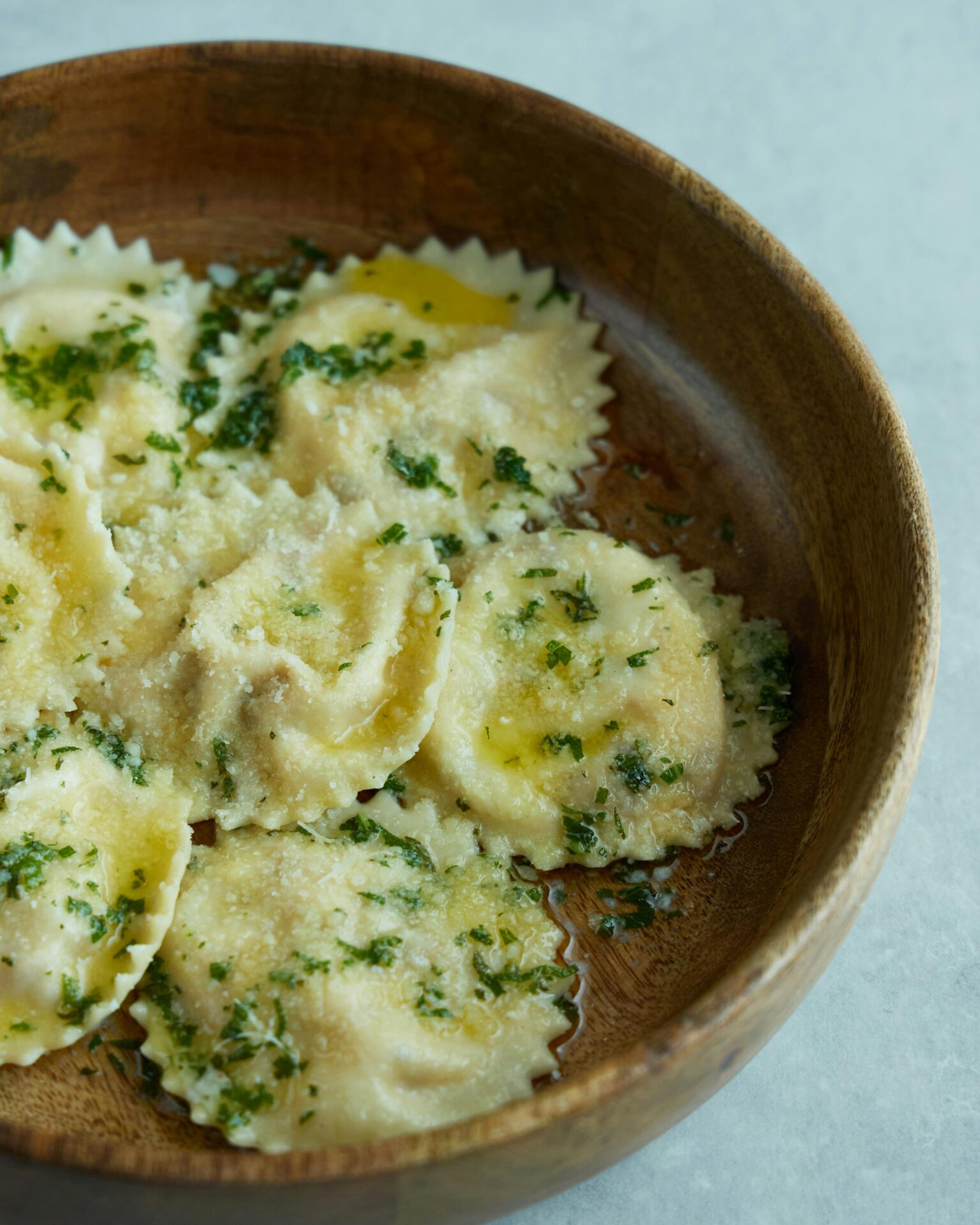
Insider Tips for the Best Wine Festivals
I quickly realized that a little planning turns a good wine festival into a great one. Arrive early to snag parking and enjoy the quieter hours.
Local festival guides often list free tastings and music events you might not find online. They make for handy souvenirs too.
Bring cash—many stalls still don’t take cards. If you’re curious about special wines, ask vendors about limited releases or reserve bottles.
Sampling wines at small, family-run wineries in places like Ulm or Karlsruhe often led me to new favorites.
Public transport saves a lot of hassle, especially after tastings. Trains connect most wine towns, so you can relax and enjoy everything Baden-Württemberg’s autumn brings.
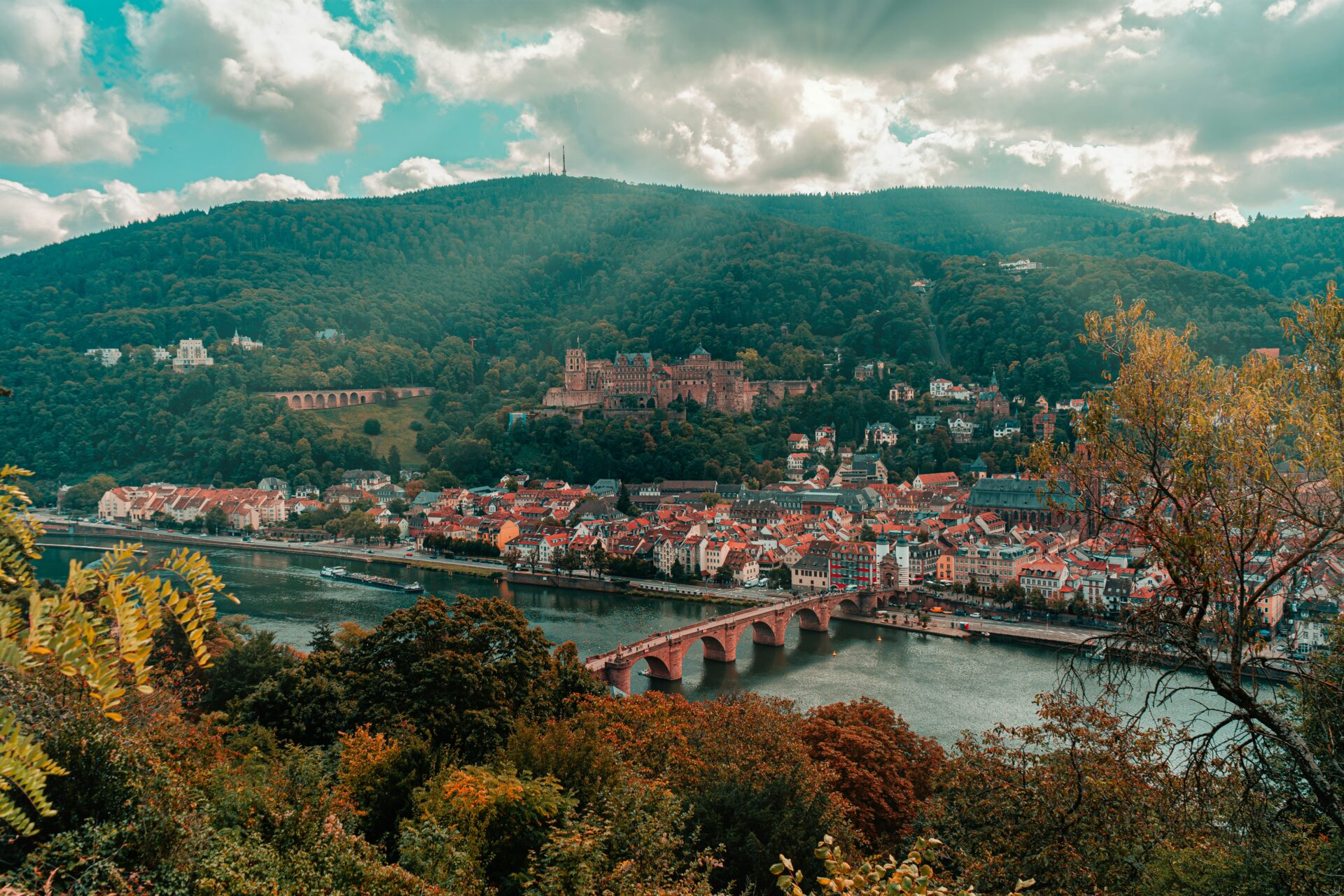
Charming Towns, Castles, and Cultural Heritage
Exploring Baden-Württemberg feels like wandering through a living storybook. Each town, castle, and museum reveals a different side of German culture, natural beauty, and history. I find it hard to forget.
Historic Castles and Museums
Standing in front of Heidelberg Castle, I saw centuries of history carved into red sandstone. The view over the Neckar River and old town quickly became one of my top sights.
Even the walk up has its own magic—winding lanes, blooming gardens in spring. Inside, the castle museum shows off royal apartments and the famous wine barrel. I love quirky history, and this one’s a must-see.
Stuttgart’s State Museum of Württemberg let me dig into artifacts from Roman times to today. I lost track of time wandering through art at the Staatsgalerie Stuttgart and the modern exhibits at the ZKM Center for Art and Media in Karlsruhe.
For a taste of living traditions, local open-air museums offer hands-on fun. I’ve baked bread, watched blacksmiths, and learned about rural life up close.
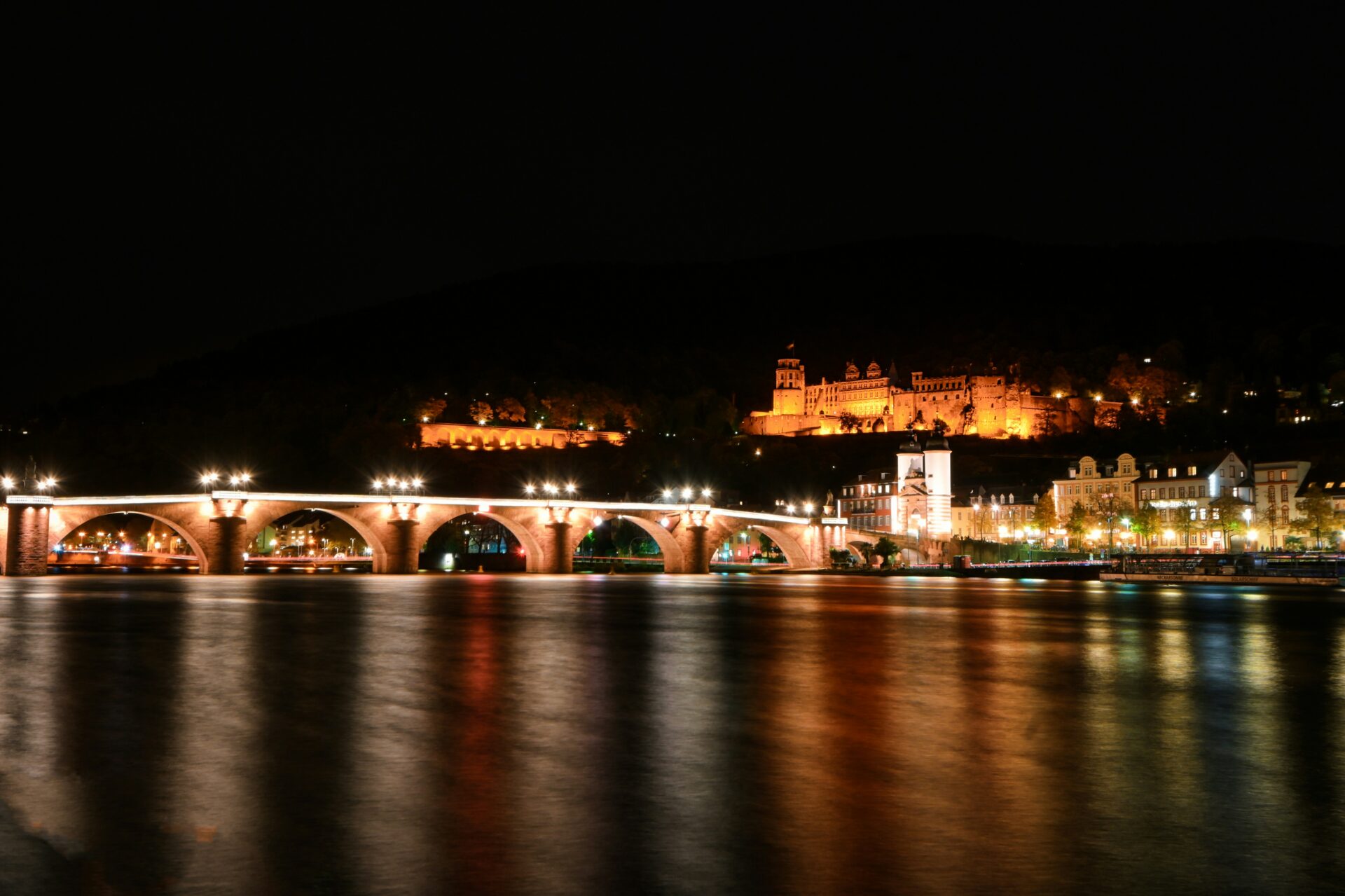
Black Forest Fairy Tales and Natural Landscapes
Driving into the Black Forest, or Schwarzwald, I felt like I’d stepped into a fairytale. Villages like Triberg and Schiltach look straight out of a storybook—half-timbered houses, cobblestone streets, and those famous cuckoo clock shops. They make for memorable souvenirs.
Hiking trails wind past waterfalls and through thick pine woods. Lakes like Titisee invite you to swim or rent a boat in summer.
Late spring means wildflowers and perfect hiking weather. At open-air theaters near castle ruins, I caught reenactments and local plays—magical nights under the stars.
Cozy cafés run by owners serve homemade cake and strong coffee—just what you need after a long walk.
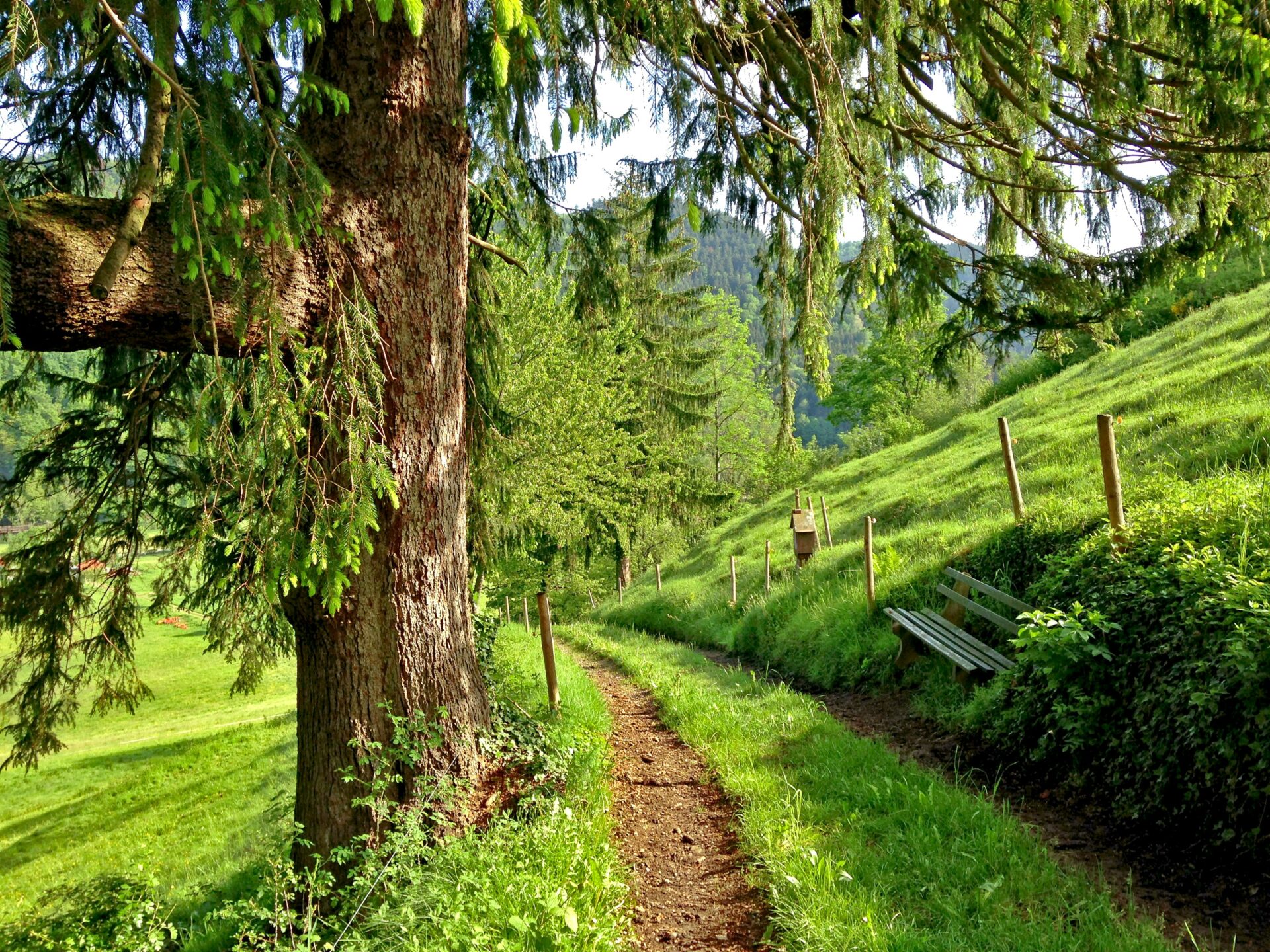
Day Trips From Stuttgart, Heidelberg, and Freiburg
Each city works as a great base for exploring smaller towns and cultural gems. From Freiburg, I took a quick trip to the edge of the Black Forest and cruised down the Danube, stopping at Sigmaringen Castle, its towers rising above the river.
Leaving Stuttgart, I’d suggest heading to Ludwigsburg Palace—a baroque beauty with sprawling gardens. Tübingen stands out with its colorful houses along the Neckar and a lively old town.
From Heidelberg, I hopped on local trains to reach historic towns like Schwetzingen, where palace gardens burst with flowers in spring.
With so many easy stops, every day trip gave me another reason to fall for Baden-Württemberg’s charm.

Planning Your Baden-Württemberg Adventure
I discovered that Baden-Württemberg shines all year, whether you crave blooming gardens, lakeside swims, or lively wine festivals. A bit of planning helps you enjoy each moment, pack just what you need, and travel responsibly—even if you’re exploring nearby Austria or Switzerland.
When Should You Visit?
Honestly, the best time to visit depends on what you love most. Spring (March to May) wakes up Mainau Island’s gardens—ideal for peaceful walks and snapping nature photos.
Summer (June to August) is for swimming in Lake Constance, hiking the Black Forest, or joining festivals and open-air markets.
September means grape harvest, and I always try to catch the autumn wine festivals in small towns and vineyards. The air cools down, crowds thin out, and it’s easier to explore villages and taste new wines.
Winters get cold, sometimes snowy, and suit anyone who loves Christmas markets or quiet, scenic towns.
| Season | Highlight Activities | Best For |
|---|---|---|
| Spring | Flower blooms, biking, gardens | Nature, families |
| Summer | Swimming, hiking, festivals | Outdoor lovers |
| Autumn | Wine festivals, hiking, markets | Food & wine fans |
| Winter | Christmas markets, spa visits | Cozy experiences |
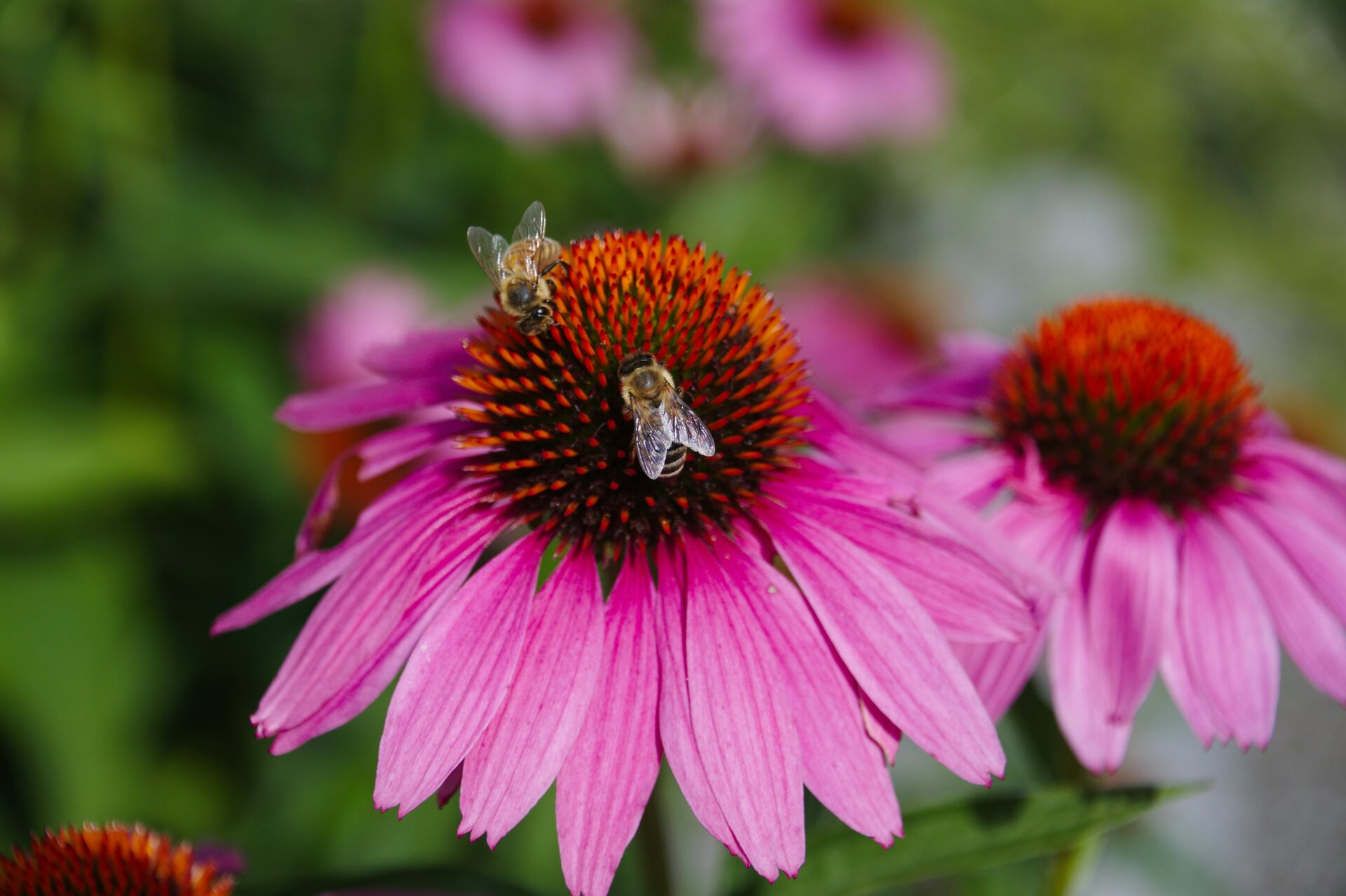
Seasonal Packing List
I always check the forecast before packing—Baden-Württemberg’s weather can change fast. Here’s what I’d bring for each season:
- Spring: Light jacket, comfy walking shoes, umbrella, and layers for chilly evenings.
- Summer: Sun hat, sunscreen, swimsuit, sandals, and a refillable bottle for lake days or hikes.
- Autumn: Warm sweater, raincoat, hiking boots, scarf, and a camera for vineyard shots.
- Winter: Thermal layers, waterproof boots, gloves, hat, and a thick coat for cold walks and Christmas markets.
A small daypack comes in handy year-round. I like carrying a reusable bag for fresh market finds or souvenirs.
Travel Tips for Sustainable Visits
Staying sustainable in Baden-Württemberg matters more to me every year. Trains and local buses run reliably, so I skip renting a car. It’s less stressful and cuts emissions.
Family-run hotels and guesthouses keep money in local communities. I carry a refillable bottle for park strolls and always stick to marked hiking trails to protect wildflowers and animal habitats.
Buying local food and wine means fewer food miles and a chance to taste the real flavors. For souvenirs, I hunt for locally made crafts or regional treats—Black Forest ham or Swabian mustard beat plastic trinkets any day.

Neighboring Destinations: Austria and Switzerland
What I really love about Baden-Württemberg? I can just hop over to Austria or Switzerland whenever I feel like it.
A quick train ride from Lake Constance drops me right in Bregenz, Austria. I’ll wander along the lakeside or maybe catch the summer opera if I’m lucky.
If I head south, Zurich in Switzerland is barely more than an hour away by train. Sometimes I’ll spend a day just drifting between art museums or sampling chocolate shops.
The train rides themselves feel pretty scenic, and honestly, I never bother with a car.
Austria and Switzerland both serve up their own flavors and vibes. I like to carve out at least half a day for each, just to soak it all in.
With no passport checks at the borders, it’s easy to slip between countries and settle in with a coffee by the lake.

